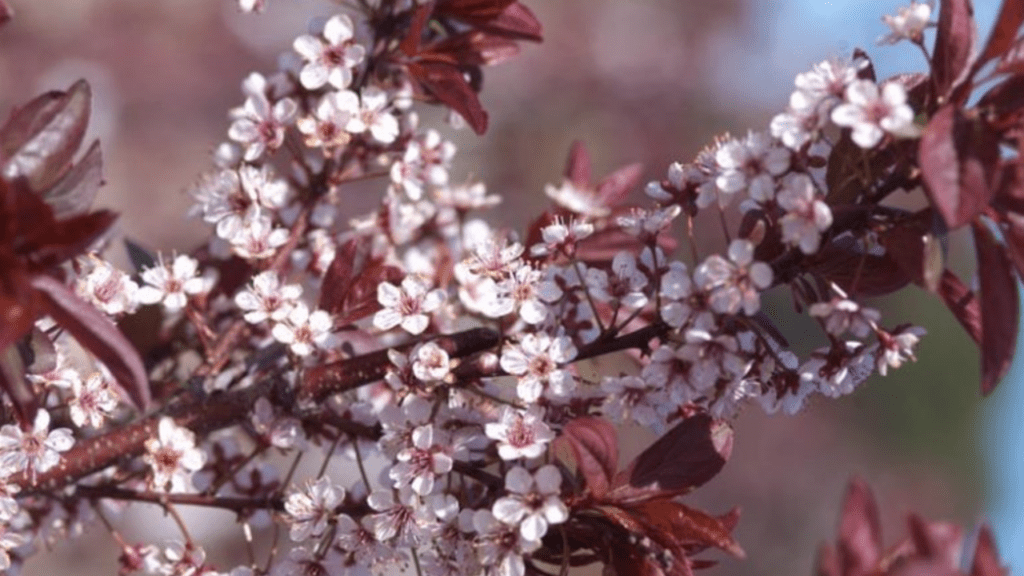
How to Care for Prunus Cerasifera: Tips for a Thriving Garden
Prunus Cerasifera, commonly known as the purple-leaf plum tree, is a beautiful addition to any garden. In order to ensure that your tree thrives and remains healthy, it’s important to follow the proper care and maintenance guidelines. In this article, we will provide expert tips on how to care for Prunus Cerasifera, covering everything from planting and watering to pruning and pest control. By following these tips, you can maintain a beautiful and thriving garden for years to come.
Table of Contents
ToggleWhat is Prunus Cerasifera?
Prunus Cerasifera, also known as the purple-leaf plum tree, is a deciduous tree that is known for its stunning purple foliage and beautiful spring blossoms. It is commonly used as an ornamental tree in gardens and landscapes. The tree produces small, edible fruits that are similar to plums, but they are not typically used for culinary purposes. Prunus Cerasifera is a popular choice for gardeners looking to add a pop of color and beauty to their outdoor space.
When it comes to caring for Prunus Cerasifera, it’s important to ensure that the tree is planted in well-draining soil and receives plenty of sunlight. Regular watering is essential, especially during dry periods, to keep the tree healthy and thriving. Pruning is also important to maintain the tree’s shape and encourage healthy growth. Additionally, keeping an eye out for pests and diseases is crucial for ensuring the tree remains in good health.
By following these care tips, you can enjoy the beauty of Prunus Cerasifera in your garden for years to come.
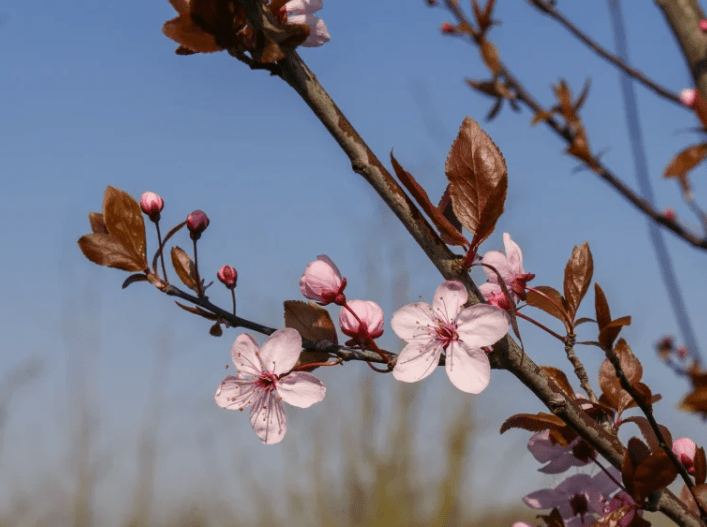
How to Plant Prunus Cerasifera
Choosing the Right Location: Sunlight and space requirements for optimal growth.
Prunus Cerasifera, also known as the Cherry Plum tree, is a beautiful addition to any outdoor space. When it comes to choosing the right location for planting, it’s important to consider the tree’s sunlight and space requirements for optimal growth. Prunus Cerasifera thrives in full sun, so it’s best to plant it in an area where it will receive plenty of sunlight throughout the day. The tree also needs ample space to spread its roots and grow, so be sure to plant it in a location with enough room for it to flourish. Additionally, it’s important to ensure that the soil is well-draining to prevent waterlogged roots, which can lead to root rot. By choosing the right location and providing the necessary care, you can enjoy the beauty of Prunus Cerasifera in your outdoor space for years to come.
Soil Preparation: Ideal soil type (well-drained, loamy soil) and how to amend it if necessary.
When it comes to planting a Prunus Cerasifera, also known as the Cherry Plum tree, it’s important to choose the right location for optimal growth. This tree thrives in full sun, so be sure to plant it in an area where it will receive plenty of sunlight throughout the day. Additionally, make sure to give the tree enough space to spread its roots and grow. The soil should be well-drained and loamy to provide the ideal growing conditions for the tree. If your soil is not ideal, you can amend it by adding organic matter such as compost or peat moss to improve its drainage and nutrient content. By taking these steps to prepare the soil and choose the right location, you can ensure that your Prunus Cerasifera will thrive and add beauty to your outdoor space for years to come.
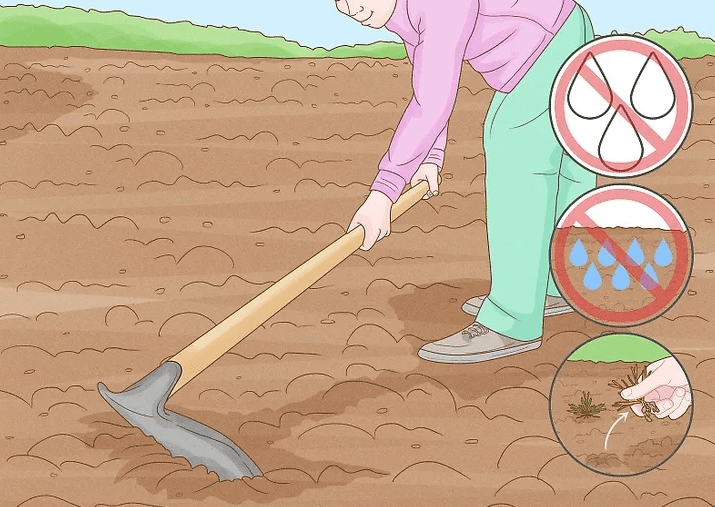
Step-by-Step Planting Guide: Digging the hole, planting depth, and spacing requirements.
When planting a Prunus Cerasifera, also known as the Cherry Plum tree, it’s important to follow a step-by-step planting guide. First, you’ll want to dig a hole that is deep and wide enough to accommodate the tree’s root ball. The planting depth is crucial, as you want to ensure that the tree is planted at the same depth as it was in its previous container. This will help to promote healthy root development. It’s also important to consider the spacing requirements for the Cherry Plum tree. These trees should be planted at least 15-20 feet apart to allow for proper root and canopy development. In terms of soil preparation, the ideal soil type for Prunus Cerasifera is well-drained, loamy soil. If your soil is not ideal, you can amend it by adding organic matter such as compost or peat moss to improve its drainage and nutrient content. By following these steps and selecting the right location with plenty of sunlight, you can ensure that your Cherry Plum tree will thrive and add beauty to your outdoor space.
Watering After Planting: Tips for proper watering right after planting to ensure the tree establishes strong roots.
Watering right after planting is crucial for establishing strong roots for your tree. When watering, it’s important to provide enough moisture to reach the root ball and ensure that the soil is evenly moist. You want to avoid overwatering, as this can lead to root rot, but you also don’t want to underwater, as this can cause the roots to dry out and die. A good rule of thumb is to water the tree thoroughly immediately after planting, and then monitor the soil moisture regularly to determine when to water again. It’s also important to water in the morning or evening to minimize water loss through evaporation. By following these watering tips, you can help your tree establish strong roots and thrive in its new environment.
Ongoing Care for Prunus Cerasifera
Watering Needs: How often to water Prunus Cerasifera, especially during dry spells.
Prunus Cerasifera, also known as the cherry plum tree, has specific watering needs, especially during dry spells. Right after planting, it is crucial to water the tree properly to ensure that it establishes strong roots. The key is to provide enough moisture to reach the root ball and ensure that the soil is evenly moist. It’s important to avoid overwatering, as this can lead to root rot, but also to avoid underwatering, as this can cause the roots to dry out and die. A good rule of thumb is to water the tree thoroughly immediately after planting and then monitor the soil moisture regularly to determine when to water again. It’s also important to water in the morning or evening to minimize water loss through evaporation. During dry spells, it’s important to increase the frequency of watering to ensure that the tree remains healthy and hydrated. By following these watering tips, you can help your Prunus Cerasifera tree thrive and continue to grow strong.
Fertilization: When and how to fertilize the tree to promote healthy growth and vibrant foliage.
When and how to fertilize a tree is important for promoting healthy growth and vibrant foliage. The timing of fertilization is crucial, and it is best to apply fertilizer in the early spring before new growth begins. Fertilizing in the fall is also beneficial, as it will help the tree to store nutrients for the winter. It’s important to choose a balanced fertilizer that contains nitrogen, phosphorus, and potassium to provide the tree with essential nutrients. When applying the fertilizer, be sure to follow the instructions on the label and avoid over-fertilizing, as this can harm the tree. It’s also important to spread the fertilizer evenly around the base of the tree and water it in thoroughly to ensure that the nutrients reach the roots. By fertilizing the tree at the right time and in the right way, you can help to promote healthy growth and vibrant foliage.
Pruning and Shaping: The best time to prune, how to shape the tree, and remove dead or damaged branches.
Pruning and shaping trees is an important part of maintaining their health and appearance. The best time to prune a tree is during the dormant season, which is usually in the late winter or early spring. This is when the tree is not actively growing, and pruning at this time will minimize stress and help the tree to heal more quickly. When shaping a tree, it’s important to consider the natural form of the tree and prune to enhance its overall structure. This can help to improve air circulation and sunlight exposure, leading to healthier growth. When removing dead or damaged branches, it’s important to make clean cuts and avoid leaving stubs, as this can lead to disease and decay. Proper pruning and shaping techniques can help to maintain the health and beauty of your trees.
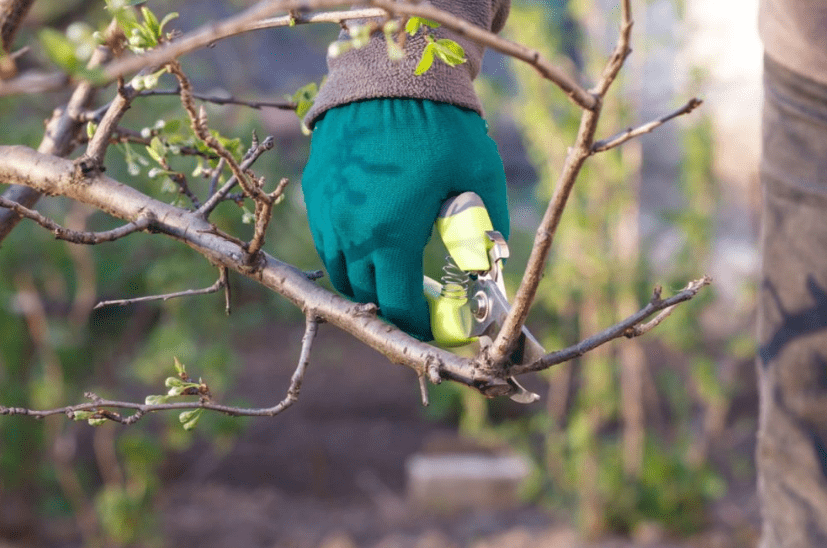
Pests and Diseases Commonly Affecting Prunus Cerasifera
Common Pests: How to identify and treat pests like aphids, caterpillars, and spider mites.
There are common pests that can affect trees such as aphids, caterpillars, and spider mites. It’s important to be able to identify these pests in order to treat them effectively. Aphids are small, soft-bodied insects that can suck the sap from the leaves and stems of trees. They can be identified by their pear-shaped bodies and come in a variety of colors. Caterpillars are the larvae of moths or butterflies and can be identified by their long, worm-like bodies and presence of chewing mouthparts. They can cause damage by feeding on leaves and can be controlled through handpicking or the use of insecticides. Spider mites are tiny arachnids that can cause damage by sucking the sap from leaves, resulting in yellowing and browning of foliage. They can be identified by their webbing and are often found on the undersides of leaves.
To treat these pests, it’s important to first identify the specific pest that is affecting the tree. Once identified, you can take steps to control the pest through methods such as insecticidal soaps, horticultural oils, or natural predators. It’s important to monitor the tree regularly for any signs of pest infestation and take appropriate action to prevent further damage.
In conclusion, being able to identify and treat common pests like aphids, caterpillars, and spider mites is important in maintaining the health and appearance of trees. By taking proactive measures to control these pests, you can help ensure the continued health and beauty of your trees.
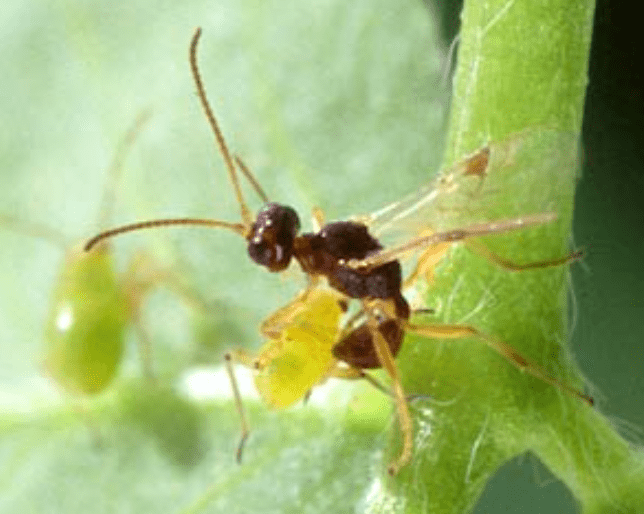
Common Diseases: Addressing fungal diseases such as powdery mildew and leaf spot, and how to prevent or treat them.
It’s important to address fungal diseases such as powdery mildew and leaf spot in order to prevent them from damaging your plants. Powdery mildew is a common fungal disease that appears as a white powdery substance on the leaves of plants. It can be prevented by ensuring good air circulation around the plants and avoiding overhead watering. Leaf spot is another common fungal disease that causes dark spots to appear on the leaves of plants. To prevent leaf spot, it’s important to water the plants at the base and avoid getting the leaves wet. If you notice signs of these fungal diseases, you can treat them by removing the affected leaves and using fungicidal sprays as directed. It’s important to regularly inspect your plants for signs of fungal diseases and take proactive measures to prevent or treat them in order to maintain the health and beauty of your garden.
Preventive Measures: Tips for preventing pest infestations and diseases, including proper spacing and maintaining air circulation.
Preventive measures are essential for maintaining the health and vitality of your plants and garden. Proper spacing and maintaining air circulation are important steps in preventing pest infestations and diseases. Ensuring that your plants are not overcrowded will help to prevent the spread of diseases and reduce the risk of pests taking hold. Good air circulation is also important in preventing fungal diseases such as powdery mildew and leaf spot. Adequate air flow around the plants can help to prevent the buildup of moisture, which is conducive to the development of fungal diseases. In addition to spacing and air circulation, it’s important to regularly inspect your plants for signs of pests and diseases. Early detection can help to prevent the spread of infestations and diseases, as well as reduce the need for chemical treatments. Proper watering techniques, such as watering at the base of the plants and avoiding getting the leaves wet, can also help to prevent the development of fungal diseases. Overall, taking proactive measures to prevent pest infestations and diseases is key to maintaining a healthy and thriving garden.
Companion Plants for Prunus Cerasifera
Prunus Cerasifera, also known as the cherry plum tree, can benefit from companion plants that help to improve soil fertility, repel pests, and attract beneficial insects. Some good companion plants for Prunus Cerasifera include lavender, chives, and yarrow. Lavender not only adds beauty to the garden, but its strong scent can repel pests such as mosquitoes and fleas. Chives can help to repel aphids and attract beneficial insects like ladybugs. Yarrow is known for improving soil fertility and can attract predatory insects that feed on garden pests. Additionally, planting cover crops like clover or vetch around Prunus Cerasifera can help to improve soil health and prevent erosion. Overall, planting companion plants around Prunus Cerasifera can help to create a balanced and healthy ecosystem in your garden.
Benefits of Growing Prunus Cerasifera in Your Garden
Prunus Cerasifera, also known as the cherry plum tree, offers many benefits when grown in your garden. Not only does it provide beautiful blossoms and delicious fruit, but it also attracts beneficial insects and pollinators. This can help create a healthy and balanced ecosystem in your garden. Additionally, the cherry plum tree is low-maintenance and drought-tolerant, making it a great addition to any garden. Its vibrant foliage and colorful fruit add aesthetic appeal, making it a great ornamental tree as well. Overall, growing Prunus Cerasifera in your garden can enhance the beauty and health of your outdoor space.
Common Mistakes to Avoid When Caring for Prunus Cerasifera
Overwatering or Underwatering: Discuss the importance of balanced watering practices.
When it comes to caring for Prunus Cerasifera, it’s important to maintain balanced watering practices. Overwatering or underwatering can both have negative effects on the health of the tree. Overwatering can lead to root rot and other issues, while underwatering can cause stress and dehydration. It’s important to find a balance and water the tree consistently, especially during dry periods. This will help to promote healthy growth and ensure the tree thrives in your garden. Additionally, using mulch around the base of the tree can help to retain moisture and regulate soil temperature, further supporting balanced watering practices. By paying attention to the watering needs of Prunus Cerasifera, you can help to maintain a healthy and vibrant tree in your garden.
Pruning Mistakes: How improper pruning can lead to weak growth or reduced flowering.
Improper pruning can have negative effects on the health and appearance of your plants. If you prune too much or at the wrong time, it can lead to weak growth or reduced flowering. It’s important to understand the proper techniques for pruning to avoid these issues. For example, cutting too much from the top of the plant can lead to weak, spindly growth. It’s important to prune strategically to encourage strong, healthy growth. Additionally, pruning at the wrong time of year can result in reduced flowering or damage to the plant. It’s important to research the specific pruning needs of your plants and follow best practices for timing and technique. By avoiding pruning mistakes, you can help your plants to thrive and maintain their beauty in your garden.
How to Propagate Prunus Cerasifera
Prunus cerasifera, also known as the cherry plum tree, can be propagated through several methods including seed propagation, softwood cuttings, and layering. When propagating through seed, it’s important to collect fresh seeds and stratify them in the refrigerator for a few months before planting. Softwood cuttings can be taken in the early summer and rooted in a well-draining soil mix. Layering involves bending a low-growing branch to the ground, covering it with soil, and allowing it to develop roots before cutting it from the parent plant. It’s important to provide the right growing conditions and care for the newly propagated plants to ensure their success. With the right techniques, you can propagate Prunus cerasifera and enjoy the beauty of this tree in your garden.
Conclusion
In conclusion, caring for Prunus Cerasifera requires attention to detail and regular maintenance. By following the tips and guidelines provided in this article, you can ensure that your garden flourishes and your purple-leaf plum tree remains healthy and vibrant. Remember to monitor the tree for any signs of pests or disease, and to provide adequate watering and pruning as needed. With proper care, your garden will be a beautiful and thriving space for years to come.
Frequently asked questions And Answer
Prunus Cerasifera, also known as the cherry plum tree, is a species of plum native to the Balkans and western Asia. It is commonly cultivated for its ornamental value and edible fruits.
Prunus Cerasifera thrives in full sunlight, so it is best to plant it in a location that receives at least 6-8 hours of direct sunlight per day.
Prunus Cerasifera prefers well-drained, fertile soil with a slightly acidic to neutral pH. It is important to avoid waterlogged or compacted soil.
In general, Prunus Cerasifera should be watered regularly, especially during dry periods. However, it is important to allow the soil to dry out slightly between waterings to prevent root rot.
Pruning is best done in late winter or early spring before new growth begins. Remove any dead, damaged, or crossing branches, and shape the tree as desired. Avoid heavy pruning during the growing season to prevent stress on the tree.
While Prunus Cerasifera is relatively low-maintenance, it can benefit from an annual application of balanced fertilizer in the spring to support healthy growth and fruit production.
Keep an eye out for common pests such as aphids, scale insects, and caterpillars, and treat them promptly with insecticidal soap or horticultural oil. Additionally, ensure good air circulation and avoid overhead watering to prevent fungal diseases.
Prunus Cerasifera typically begins to bear fruit 3-5 years after planting. The fruits are small, round, and vary in color from yellow to red, and they are generally ready for harvest in late summer to early fall.
